Mini and micro unmanned aerial vehicles
Miniature tactical drone HUGINN X1. The company Sky-Watch Labs, in collaboration with the Danish Technical University, is currently developing a MUNINN VX1 UAV UAV with partial government funding through the Innovation Fund. The MUNINN VX1 BLAH is capable of taking off and landing vertically in cramped and confined spaces, flying horizontally at high speed, overcoming long distances and quickly reaching objects or zones of interest
Is the world of mini and micro-UAV becoming overpopulated? What does the landscape look like? Will Darwinian selection happen that will allow the best to live and develop along with scientific progress?
In recent years, small-sized UAVs (both mini and micro) have become a popular surveillance tool in defense and security, and constantly evolving technological progress is likely to provide a bright future for this technology. Special attention is paid to the further improvement of these systems for military operations in urban environments; continuous research and development work in this direction is carried out in many countries around the world.
However, in modern operational space, these technologies are also spreading among terrorist and rebel groups seeking to use UAVs for the delivery of dirty bombs, which causes the authorities to increase the security of their own systems, as well as radically change tactics and methods of dealing with UAVs.
A small vertical takeoff and landing with traces of radiation materials on the roof of the residence of the Prime Minister of Japan in Tokyo in April 2015 was evidence of the strengthening of this trend, and this forced the more advanced armed forces to think about how best to use these technologies in relation to offensive and defense operations.
Mini drone
Israel continues to maintain a strong position in the market due to the intensive development of small-sized UAVs, which is primarily due to the fact that the Israeli army constantly conducts counter-terrorism and counterinsurgency operations as part of larger-scale actions to ensure internal security in built-up urban areas.
According to General Manager of Israel Aerospace Industries (IAI) Malat Baruch Bonen, the UAV market is witnessing a “steady” growth in the number of small UAVs (both micro and mini), especially when miniaturization of the size and weight of sensory equipment reduces the aircraft’s payload requirements. In addition, he believes that this trend is also due to the fact that the use of small platforms allows to reduce the likelihood of their identification and falling into the hands of the enemy.
The IAI Malat family of small aircraft includes the BIRD-EYE 400 mini-UAV, designed to collect intelligence data for the lower echelons; micro-UAV MOSQUITO with a miniature video camera for urban operations; and the GHOST rotor-wing mini-UAV, deployed from two backpacks, also designed for urban operations and “silent” reconnaissance and surveillance.
However, in addition to the traditional manufacturers of smaller UAVs in Europe, Israel and the United States, a number of companies in the Asia-Pacific region have now emerged, offering their advanced solutions on the world market.
Having gained a lot of experience in successful development of larger platforms, at the beginning of this year, the Indian company Asteria Aerospace decided to start developing its first mini-UAV A400. The A400 platform is a 4 kg quadrocopter designed to perform reconnaissance missions in built-up areas. The operating speed of the device is 25 km / h, it is able to perform its tasks for 40 minutes within the line of sight at the maximum range of 4 km.
Asteria Aerospace reported that by the end of 400, the A2015 should be received by the military and security forces for evaluation.
In Europe, the Polish Armaments Inspectorate issued a request for proposals for mini-UAV systems as part of a broader strategy to increase the level of robotization of the Polish armed forces.
The Polish Ministry of Defense plans to acquire 12 large tactical UAVs under the designation ORLIK, but the Weapons Inspectorate also wants to purchase a WIZJER 15 mini-UAV for urban operations and reconnaissance and observation tasks in the enemy’s rear. In addition, the Polish Defense Ministry will undoubtedly purchase smaller micro-UAVs.
The balance of the Polish Ministry of Defense already has a certain number of FlyEye UAVs from WB Electronics, as well as roughly the 45 mini-UAV ORBITER from Aeronautics, which were delivered in 2005-2009 years. These systems with electric motors are capable of carrying out reconnaissance and observation operations in direct visibility with a practical 600 meter ceiling, maximum speed of 70 nodes, flight duration 4 hours and useful payload 1,5 kg.
Under the terms of the request for proposals, each of the 15 mini-systems WIZJER will consist of three aircraft with the appropriate ground control stations and logistics, including spare parts. The Ministry of Defense has requested a mini-UAV with a maximum range of 30 km, intended for reconnaissance, surveillance and reconnaissance at company and battalion levels. The contract is expected to be issued in 2016 year, and the aircraft themselves will be delivered in 2022 year.
The preferred options presented for the competition include a modified FlyEye mini-UAV from WB Electronics, as well as a joint offer of the E-310 UAV UAV from Pitradwar and Eurotech.
The FlyEye device can be launched from the hands of “limited spaces” in urban areas; It has a unique parachute return system, with which the device is lowered within 10 radius of meters from the assigned touchdown point.
The instrument block is installed at the bottom of the fuselage in order to optimize the sensor's field of view; the FlyEye device is capable of carrying two cameras in one instrument unit. The device itself, which has anti-icing and anti-stopping systems, is controlled using a light ground control station (LGCS) Light Ground Control Station (LGCS), while data and visual information from the instrument unit is transmitted to the video terminal in real time.
The device itself can fly directly to the target point along a predetermined route and is capable of patrolling over the area of interest. The LGCS station allows you to control the device also in manual mode.
The digital data transmission channel also provides the ability to transfer target data to mortar fire control systems or combat control systems in order to perform subsequent fire or other combat missions. The on-board communications system operates in the NATO 4,4-5,0 GHz frequency band. According to WB Electronics, FlyEye UAVs are operated by two people, the propeller is driven by a “silent” electric motor powered by a lithium-polymer battery.
The length of this mini-UAV is 1,9 meter wingspan 3,6 meter, maximum take-off weight 11 kg. The flight speed of the vehicle is 50-170 km / h, it can fly at altitudes up to 4 km at a maximum range of 50 km, the maximum flight duration is three hours.
According to Eurotech, the E-310 UAV can carry optoelectronic equipment or synthetic aperture radar, as well as other “specialized surveillance equipment”. It has “high mobility and reduced operating costs”, the device can take up to 20 kg of onboard equipment, with the maximum duration of the flight reaches 12 hours. The practical ceiling of the E-310 is 5 km, it can reach speeds of 160 km / h and has a maximum range of 150 km. The device also starts using a pneumatic installation and returns with a parachute, or sits down in the traditional way on the ski or wheel racks. Eurotech explains that the E-310 is transported on board a “small car” or in a trailer.
SKYLARK ILE mini-UAV from Elbit Systems took part in the fighting, He was chosen by the Israeli army as an unmanned aircraft battalion-level complex, and also delivered to more than 20 customers from different countries. The soldiers of the unit, equipped with SKYLARK I-LE drone, spent a week in the Negev desert, learning how to work with the SKYLARK complex (on the photo)
Micro-drone
Also very useful during operations in urban environments unmanned aerial vehicles of the class "micro". The military want small, hands-on systems capable of conducting covert surveillance in buildings, enclosed spaces and target zones. Similar tiny systems have already been used in Afghanistan, such as Prox Dynamics's PD-100 BLACK HORNET UAVs, although operators have criticized it for its lack of reliability when conducting operations in difficult wind conditions and when it is very dusty.
This specific “personal reconnaissance system” is in fact a vertical take-off and landing aircraft of the “nano class”, which operates from a virtually silent electric motor. With a screw diameter of just 120 mm, BLACK HORNET carries a camera weighing 18 grams, develops speed 5 m / s and has a flight time up to 25 minutes. The device with a remotely controlled station of optical specific intelligence on a turntable can operate in direct line of sight from the operator up to 1,5 km, it can fly along pre-programmed routes, and also hang on the spot.
However, current trends are likely to indicate that the military chooses a slightly larger micro-UAV to perform reconnaissance missions, usually carried out before a combat operation.
The InstantEye UAV, manufactured by Physical Science Incorporated (PSI), is currently in service with unnamed special units of the NATO countries and anti-drug groups operating in South America. This aircraft was also adopted by the US Department of Defense and was recently delivered to the British Army for testing. This manual start-up device weighs less than 400 grams, and the manufacturer claims that it is ready to start in just 30 seconds. The maximum flight time is 30 minutes, the InstantEye has a maximum range of 1 km and can carry various sensors.
During the flight, this BLAH imitates the movements of hawk moth (butterfly species) can be controlled in “manual” mode, while developing a speed of up to 90 km / h. InstantEye is controlled from the ground station; Its surveillance and reconnaissance kit consists of front, side, and lower camera overview, providing navigation, tracking, and target designation. Visual intelligence can be enhanced by installing a GoPro high-resolution camera or an infrared camera that can generate an image created by the built-in infrared LED illuminator that can illuminate the ground from a height of 90 meters.
However, in addition to the existing use for covert surveillance and reconnaissance in the rear, this air vehicle will soon receive a sensory set of reconnaissance weapons of mass destruction in response to possible counter-terrorist operations in urban areas. In addition, in order to meet the needs of special NATO units, it is possible to install relay equipment for transmitting voice and voice data to it.
Another system that is very popular with special units is unmanned aviation the SKYRANGER complex (LHC) of Aeryon Labs, which is internationally promoted by Datron World Communications. According to Aeryon Labs Executive Director Dave Crockett, their LHC is a cost-effective alternative to other real-time situational information systems. He explained: “The vertical take-off and landing systems do not require any additional launch and return equipment. They are controlled by one operator and therefore other members of the group can focus on other tasks, that is, the LHC becomes a means of increasing combat effectiveness. Real-time video can be transmitted to the command center and to other devices on the network. ”
The company recently unveiled a new Aeryon HDZoom30 image transmission device for its SKYRANGER, which, according to Croatch, provides “unprecedented aerial intelligence capabilities, which is very important for the success of the operation. We get a UAV system with stable and reliable flight performance that can be in the air for up to 50 minutes and which has a reliable digital video channel in real time. "
Meanwhile, the DARPA Advanced Defense Studies Directorate is exploring a technology that would help mini-UAVs and micro-UAVs to fly in an intensely disturbed space, regardless of direct human control and not dependent on GPS navigation. Earlier this year, the FLA (Fast Lightweight Autonomy) program was launched, which includes the study of biomimetic information regarding the maneuverability of birds and flying insects. Although DARPA uses a small six-screw unit weighing just 750 grams as a test platform, the program will still focus on developing algorithms and software that can be integrated into small UAVs of any type.
“The Directorate hopes that the developed software will allow the UAV to work in a number of spaces to which access was normally prohibited, a vivid example of this is the internal premises. Small UAVs, for example, proved to be useful during the conduct of short-range reconnaissance deployed patrols, but they are unable, however, to provide information about the situation in the building, which is often a critical moment in the whole operation, ”explained the DARPA representative.
The program provides for the achievement of the following characteristics: work at speeds up to 70 km / h, the range of 1 km, the duration of 10 minutes, work without reliance on communications or GPS, computing power 20 Watts.
Initial demonstrations are scheduled for the beginning of 2016 of the year in the form of “slalom tests in the open air”, after which in the 2017 year they will be tested in rooms.
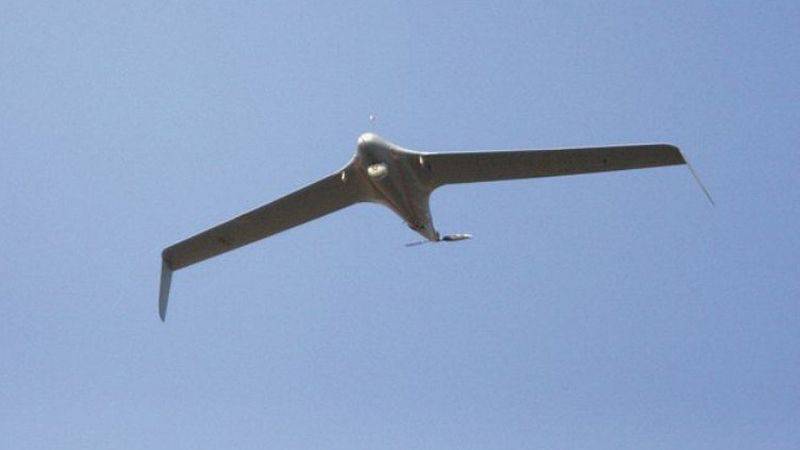
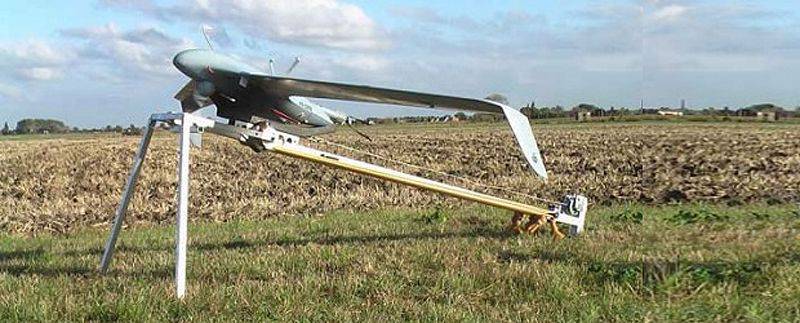
IAI's modern, affordable, mini-UAV BIRD-EYE-650 provides real-time video data day and night during urban operations and reconnaissance in the rear of the enemy
Payload
With regard to the development of onboard sensors and systems, the general trend is to constantly reduce the size of the sensors. At the exhibition Aero India 2015, Controp Precision Technologies showed its Micro-STAMP (Stabilized Miniature Payload) optical specie station. The station weighing less than 300 grams, which includes a daytime color CCD camera, an uncooled thermal imager and a laser pointer, is designed for installation on a mini-UAV.
The stabilized station was created for carrying out reconnaissance missions in depth and is distinguished by various functions, including observation, inertial tracking of the target, holding coordinates, arriving at the coordinates, scanning / aerial photography, and the pilot window mode.
A station with dimensions 10 cm x 8 cm, specially reinforced for hard landings, can be installed in the nose or under the fuselage. The daytime camera is based on CMOS technology (Complementary Metal-Oxide Semi-conductor - the metal-oxide-semiconductor complementary structure), and the thermal imager operates in the 8-14 nm range. According to the company Controp, the station has already been tested in the units of the Israeli army, in addition, in 2016, it is planned to develop a larger version of 600 grams.
A US Army soldier prepares InstantEye II micro-UAVs for surveillance on the other side of the hill during a combined arms exercise at Fort Benning in May 2015.
Fighting small-sized UAVs
One of the most important advantages of using mini- and micro-UAVs is that they are capable of carrying out reconnaissance tasks, while remaining undetected, cannot be detected by air defense radars and ground-based radars programmed to capture larger airborne vehicles.
However, after the use of small-sized UAVs by militants of various kinds during the military operations in Israel and Libya, the military and industry are currently addressing this threat and have begun to develop a special technology that will identify, monitor and neutralize mini- and micro-UAVs.
At the 2015 Paris Air Show, Controp Precision Technologies showed off its Tornado, a lightweight, fast-scanning thermal imager capable of detecting and tracking mini-UAVs at low altitudes flying at various speeds. The matrix, operating in the mid-wave IR region of the spectrum, provides a 360° all-round view, it is able to determine the slightest changes in space associated with the flights of small UAVs, both aircraft and helicopter circuits. The vice president of the company explained:Drones becoming more common, they represent new threats to personal safety. Most radar-based air defense systems are unable to detect the threat of small drones flying below 300 meters. The Tornado pans a very large area at high speed, using sophisticated algorithms to detect very small changes in the environment. The Tornado was recently tested for its ability to detect and track even the smallest, low-flying drones."
It is reported that the system is able to determine small-sized UAVs at distances "from several hundred meters" to "tens of kilometers", but it is worth noting that, given the general concept of operations, which involves the use of platforms of this class in urban environments, such opportunities will be simply unclaimed.
The Tornado thermal imaging system can be used as a standalone device or integrated into various air defense systems. It has an integrated audible and visual warning system for notifying the operator of any intrusion into the no-fly zone. However, in order to neutralize the threat, this system should transmit a signal either to the electronic countermeasure system or to the weapon system.
A similar solution is currently being proposed by a consortium of British companies (Blighter Systems, Chess Dynamics and Enterprise Control Systems), which has developed a surveillance system and radio-frequency suppression of UAVs.
A British consortium recently announced the development of a system to combat small UAVs called the Anti-UAV Defense System (AUDS). Blighter Surveillance Systems, Chess Dynamics and Enterprise Control Systems (ECS) have partnered specifically to jointly develop this drones.
Executive Director of Blighter Surveillance Systems, Mark Redford, in an interview explained that the AUDS system works in three stages: detection, tracking and localization. Radiator A400 Series Air Security Radar from Blighter is used to detect UAVs, Hawkeye Long Range Observation and Search Engine from Chess Dynamics for tracking, and finally, the ECS radio-frequency silencer works as a neutralizing component.
Representatives of the companies reported that the AUDS system is directly designed to deal with small aircraft and helicopter-type UAVs, for example, quadcopters, and even named some similar systems that can be simply bought in a store.
Redford said that this system has advantages over similar systems, since it includes components tested in real conditions, for example, the radar is already in service with several armies in the form of ground surveillance radar, which operates there in a very noisy space.
Extended tests of the AUDS system were conducted in France and the UK, said Dave Morris, head of business development at ECS. The system was tested against several aircraft in scenarios close to real; a total of 80 test hours and 150 departures have been carried out today.
The French Ministry of Defense conducted tests in March 2015, while the British Laboratory of Defense Science and Technology conducted them in early May. The AUDS system is currently directed to the USA, where it will be demonstrated to several potential US and Canadian operators. Also scheduled for testing in one of the countries of the Asia-Pacific region.
During the tests, the system demonstrated the ability to detect, track and neutralize targets in just 15 seconds. The neutralization range is 2,5 km with almost instantaneous impact on the target.
A key feature of the system is the ability of the RF silencer to tune in to certain data transmission channels with the exact level of exposure required. For example, a silencer can be used to silence a GPS signal received by a UAV or a radio monitoring and control channel. There is also the potential for introducing an interception capability into the system, which will allow the AUDS operator to “practically” take over control of the UAV. The work of the silencer is not only to "knock down" the device, it can be used simply to violate the functionality of the UAV in order to force its operator to withdraw its device from the zone.
Representatives of the companies acknowledged that the most difficult problem for the AUDS system could be the fight against low-flying UAVs in the urban space, since in this case there is a large amount of interference and a large number of reflective surfaces. The solution to this problem will be the goal of further development.
Although the system has a high degree of automation in a number of aspects, especially when it is detected and accompanied, human participation is key to the functioning of AUDS. The final decision to neutralize the goal or not, and to what extent, falls entirely on the operator.
Technology for the radar is borrowed from ground-based surveillance radars, which are in service with the British army and also South Korea, where they monitor the demilitarized zone with North Korea.
The Doppler radar with continuous radiation with frequency modulation operates in the electronic scanning mode and provides coverage in azimuth 180 ° and in elevation 10 ° or 20 °, depending on the configuration. It operates in the Ku range and has a maximum range of 8 km, it can determine the effective reflection area of up to 0,01 m 2 size. At the same time, the system can capture several targets for tracking.
Survey-search system Hawkeye from Chess Dynamics is installed in one unit with a radio-frequency silencer and consists of a high-resolution optical-electronic camera and a cooled medium-wave thermal imager. The first one has a horizontal field of view from 0,22 ° to 58 °, and a thermal imager from 0,6 ° to 36 °. The system uses a digital tracking device Vision4ce, providing continuous tracking in azimuth. The system is able to continuously pan in azimuth and tilt from -20 ° to 60 ° at a speed of 30 ° per second, accompanying targets at a distance of about 4 km.
The multiband RF silencer is distinguished from ECS by three built-in directional antennas that form a beam 20 ° wide. The company has gained extensive experience in the development of technologies to combat improvised explosive devices. This was told by a company representative, noting that several of its systems were deployed by coalition forces in Iraq and Afghanistan. He added that the company ECS know the vulnerabilities of data transmission channels and how to use it.
The heart of the AUDS system is the operator control station, through which you can manage all the components of the system. It includes tracking display, main control screen and video recording display.
In order to expand the observation area, these systems can be networked, be it several full-fledged AUDS systems or a network of radars connected to one “search-and-search system / silencer” unit. Also, the AUDS system could potentially be part of a larger air defense system, although companies do not intend to develop this direction yet.
The Executive Director of Enterprise Control Systems noted the following: “Almost every day there are UAV incidents and security perimeter breakouts associated with drones. In turn, the AUDS system is capable of alleviating increased fears in the military, government and commercial structures associated with small-sized UAVs. ”
“While UAVs have many positive uses, it is expected that they will increasingly be used for villainous purposes. They can carry cameras, weapon, toxic chemicals and explosives and will increasingly be used for terror, espionage and smuggling. "
Materials used:
sky-watch.dk
www.tsagi.ru
www.iai.co.il
www.wb.com.pl
www.miltechmag.com
www.psicorp.com
www.baesystems.com
www.darpa.mil
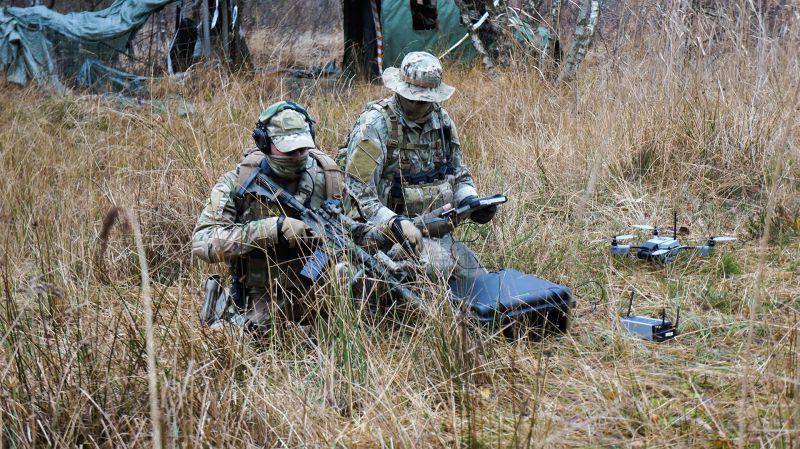
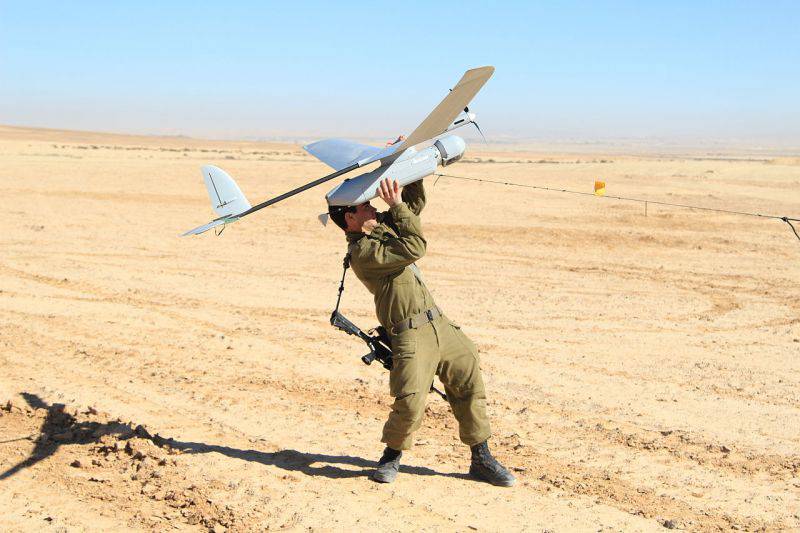
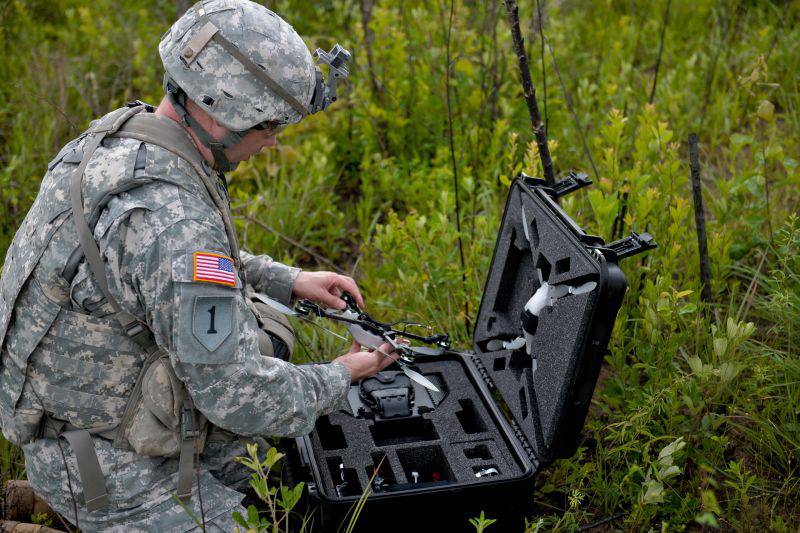
Information